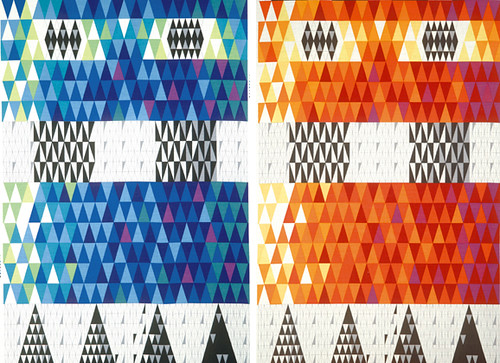
The United Nations is about to undergo a five-year renovation, systems and sustainability upgrade and preservation effort. Staff members have already left the Secretariat, spread out over a million square feet in midtown (and some poor souls in LIC). A white trailer city has sprung up on the complex’s lawn — the corrugated metal facades could look like the work of Fumihiko Maki, but don’t — for the highest level of the international bureaucracy. Lever House may have replaced its pioneering green glass facade a decade ago, but as a symbol of modernism-as-history, and the pleasures and pains of the modernist enterprise, the UN is hard to beat.
On a tour Tuesday of some of the spaces to be restored, sponsored by the Archives Preservation Trust, the magnitude of bringing the UN up to date became perfectly clear. David Fixler and other members of the Einhorn Yaffee Prescott team tasked with renovating the Assembly and conference rooms, and coordinating the preservation of all, pointed out legacies large and small — ashtrays, burnt-out fluorescent fixtures, collapsible projection screens, glowing domes, lamps like nodding pods. Much looks tired, but other elements look oddly new. Particularly in the conference rooms donated by the Scandinavian nations — the Economic and Social Council, designed by Sven Markelius; the Trusteeship Council, designed by Finn Juhl, and Swede—one could see the UN as back in fashion. Juhl’s chairs for the delegates perfectly toe the line between comfortable and workmanlike. The curtain drawn against the East River glare in Markelius’s room is the Ljungbergs textile above, in the orange colorway, simultaneously inspirational and folksy. The front parts of these chambers are ceremonial, woodsy, but the back reaches have rows of seats (once for the public) and exposed ductwork painted blues and greens. The seats are Naugahyde.
Modern was new when the UN was built, and its furniture and fittings, if not its architecture, have a funny, charming in-between sensibility, neither pre- nor post-war. The design, like the project, was working itself out as it went along. The UN may have let itself go too long, but it seems a good moment for the restoration. To see the tangled wires and flaking paint is to make the institution seem vulnerable again. That is no doubt not the intent, original or contemporary, but it adds humanity to an organization that can seem like an abstract, possibly outdated icon.
